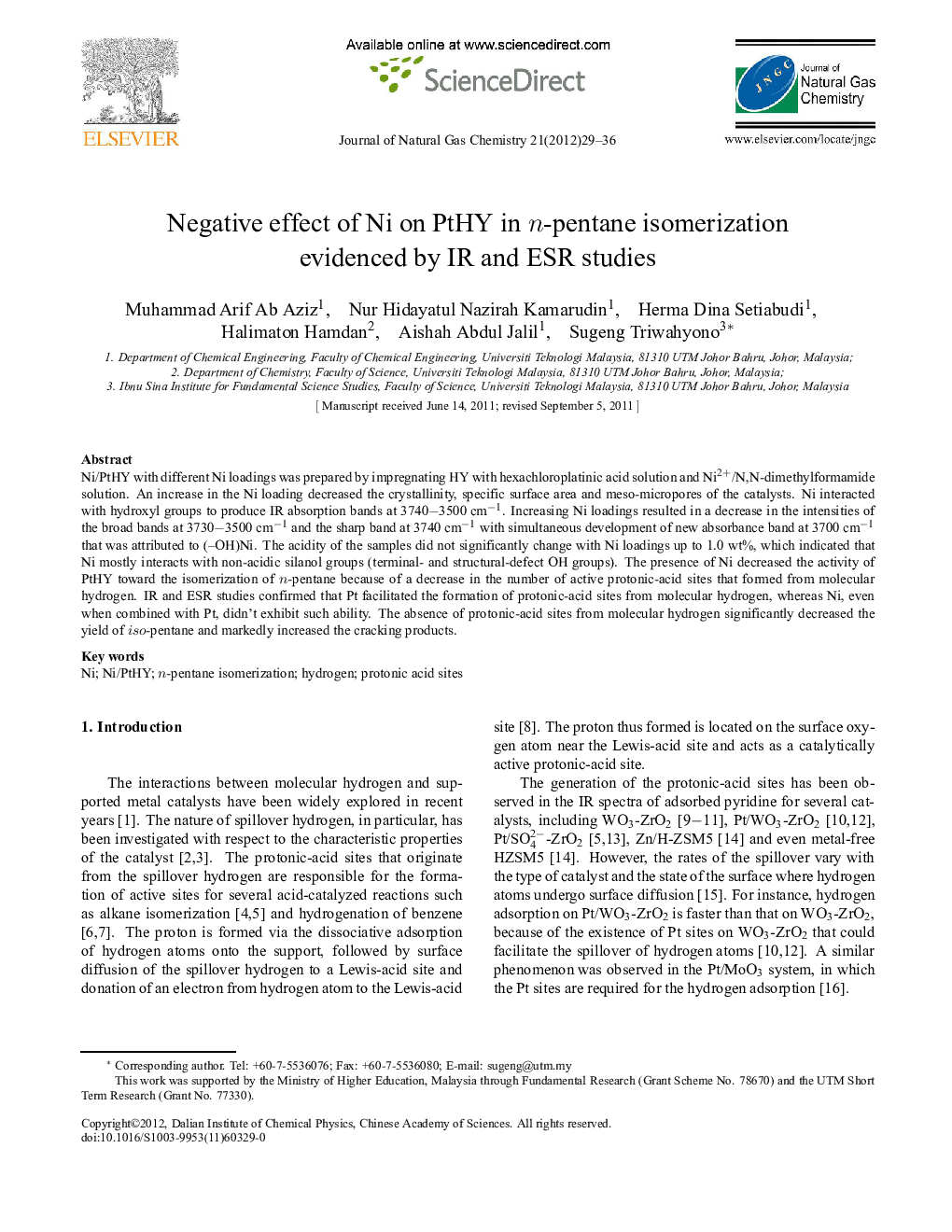| Article ID | Journal | Published Year | Pages | File Type |
|---|---|---|---|---|
| 71397 | Journal of Natural Gas Chemistry | 2012 | 8 Pages |
Ni/PtHY with different Ni loadings was prepared by impregnating HY with hexachloroplatinic acid solution and Ni2+/N, N-dimethylformamide solution. An increase in the Ni loading decreased the crystallinity, specific surface area and meso-micropores of the catalysts. Ni interacted with hydroxyl groups to produce IR absorption bands at 3740–3500 cm−1. Increasing Ni loadings resulted in a decrease in the intensities of the broad bands at 3730-3500 cm−1 and the sharp band at 3740 cm−1 with simultaneous development of new absorbance band at 3700 cm−1 that was attributed to (–OH)Ni. The acidity of the samples did not significantly change with Ni loadings up to 1.0 wt%, which indicated that Ni mostly interacts with non-acidic silanol groups (terminal- and structural-defect OH groups). The presence of Ni decreased the activity of PtHY toward the isomerization of n-pentane because of a decrease in the number of active protonic-acid sites that formed from molecular hydrogen. IR and ESR studies confirmed that Pt facilitated the formation of protonic-acid sites from molecular hydrogen, whereas Ni, even when combined with Pt, didn't exhibit such ability. The absence of protonic-acid sites from molecular hydrogen significantly decreased the yield of iso-pentane and markedly increased the cracking products.
